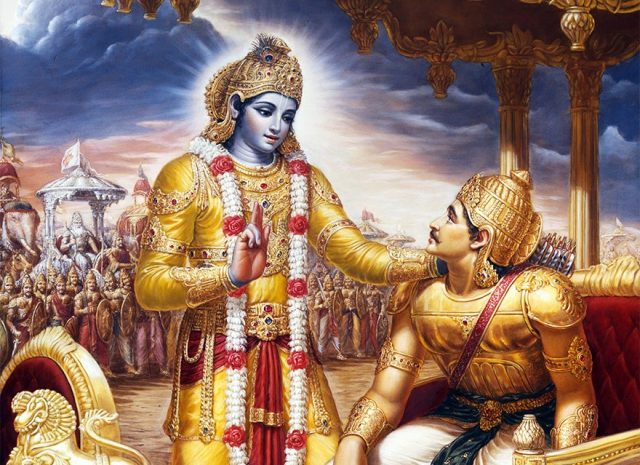
— Ananth Seth
Bharat is a land of fairs, festivals and celebrations. After the celebration of Raksha Bandhan, the first major festival of the monsoons, the land is set to celebrate the festival of Janmaashtami next.
The festival of Janmaashtami marks the birth anniversary of Krishna – the eighth incarnation (Avatar) of Lord Vishnu and a central character in the Mahabharata, the Bhagavat Purana and the Bhagavad Gita. It is celebrated on the eighth day (Ashtami) of the Krishna Paksha (dark fortnight) in Shraavan, the fifth month lunar Hindu Calendar and, as per the luni-solar Hindu calendar, on the eighth day of Krishna Paksha in Bhadrapada. This overlaps with August and September of the Gregorian calendar.
Sri Krishna was the greatest Diplomat and the most astute Statesman of his era. Sri Krishna’s birth and life have influenced Indian culture, civilization and philosophy in a profound way. The role played by Sri Krishna in Bhagwad Gita, the 700-verse scripture that is a part of the epic Mahabharata and which is widely regarded as the National Scripture of India, involves a dialogue between Krishna and Arjuna where Krishna as a teacher and divine charioteer presents dharma, yoga, karma, jnana and bhakti as the essential elements of warrior behaviour.
In addition to the spiritual and theological domains, stories of Krishna have also played an important role in the history of Indian theatre, music and dance, particularly through the tradition of ‘Rasa Leela’. These are dramatic enactments of Krishna’s childhood, adolescence, and adulthood. The major and recurring theme involves Krishna playing flute in Rasa Leela, only to be heard by certain Gopis (cowherd maidens), which is theologically supposed to represent divine call only heard by certain enlightened beings. Krishnattam, a dance form from Kerala, traces its origins to Krishna legends.
The Legend of Krishna figures extensively in the mythologies of other dharmic religions viz. Jainism, Buddhism and Sikhism too. Krishna is mentioned as Krishna Avtar in the Chaubis Avtar, a composition in Dasam Granth, a religious text of Sikhism traditionally and historically attributed to Guru Gobind Singh ji. According to Jain tradition, Krishna was a cousin of Neminatha, the 22nd Tirthankara of the Jains. The story of Krishna occurs even in the Jataka tales of Buddhism.
Beyond the borders of modern India, Krishna finds elaborate mentions in Southeast Asian history and art. The most elaborate temple arts of Krishna are found in a series of ‘Krsnayana Reliefs’ in the Prambanan Hindu temple complex near Yogyakarta in Indonesia. The medieval era arts of Vietnam and Cambodia too feature Krishna. The Krishna Govardhana art form of 6th century Danang (Vietnam) and at the 7th-century caves at Phnom Da in Angkor Borei of Cambodia are some of the most sophisticated of this era. A large number of sculptures and icons have been found in the Si Thep and Klangnai sites in the Phetchabun region of northern Thailand.
It might come as a surprise to many that Krishna worship or reverence has been adopted by several neo-sects and modern offshoots of Abrahamic religions too. Krishna has been canonised by Aleister Crowley, an English Occultist and founder of the religion Thelema and is recognised as a saint of Ecclesia Gnostica Catholica in the Gnostic Mass of Ordo Templi Orientis. Bahais, the adherents of Bahai faith, believe that Krishna was a “Manifestation of God”, or one in a line of prophets who have revealed the Word of God progressively for a gradually maturing humanity. Ahmadiyyas, followers of a 20th century Islamic movement, consider Krishna as one of their ancient prophets in the likeness of prophets such as Jesus, and Muhammad. Theosophists regard Krishna as an incarnation of Maitreya (one of the Masters of the Ancient Wisdom), the most important spiritual teacher for humanity along with Buddha.
This year, Janmaashtami will be celebrated on 24th of August. Let us continue to celebrate our festivals – which are the best ways of bringing the society together to take a de-stressing detour from the routine and celebrate in unison – with traditional gaiety and fervour to preserve our cultural and religious heritage. Happy Janmaashtami!














